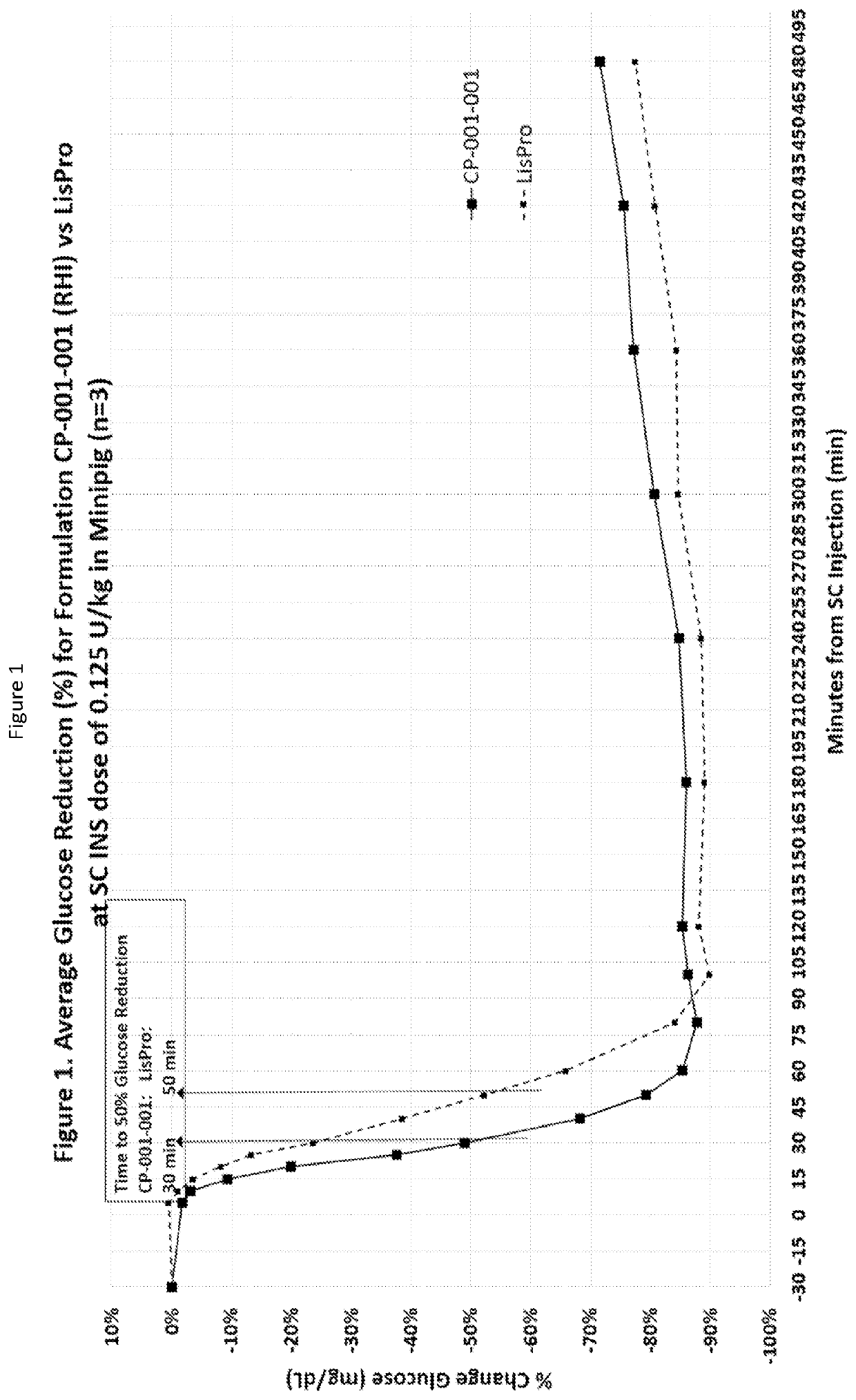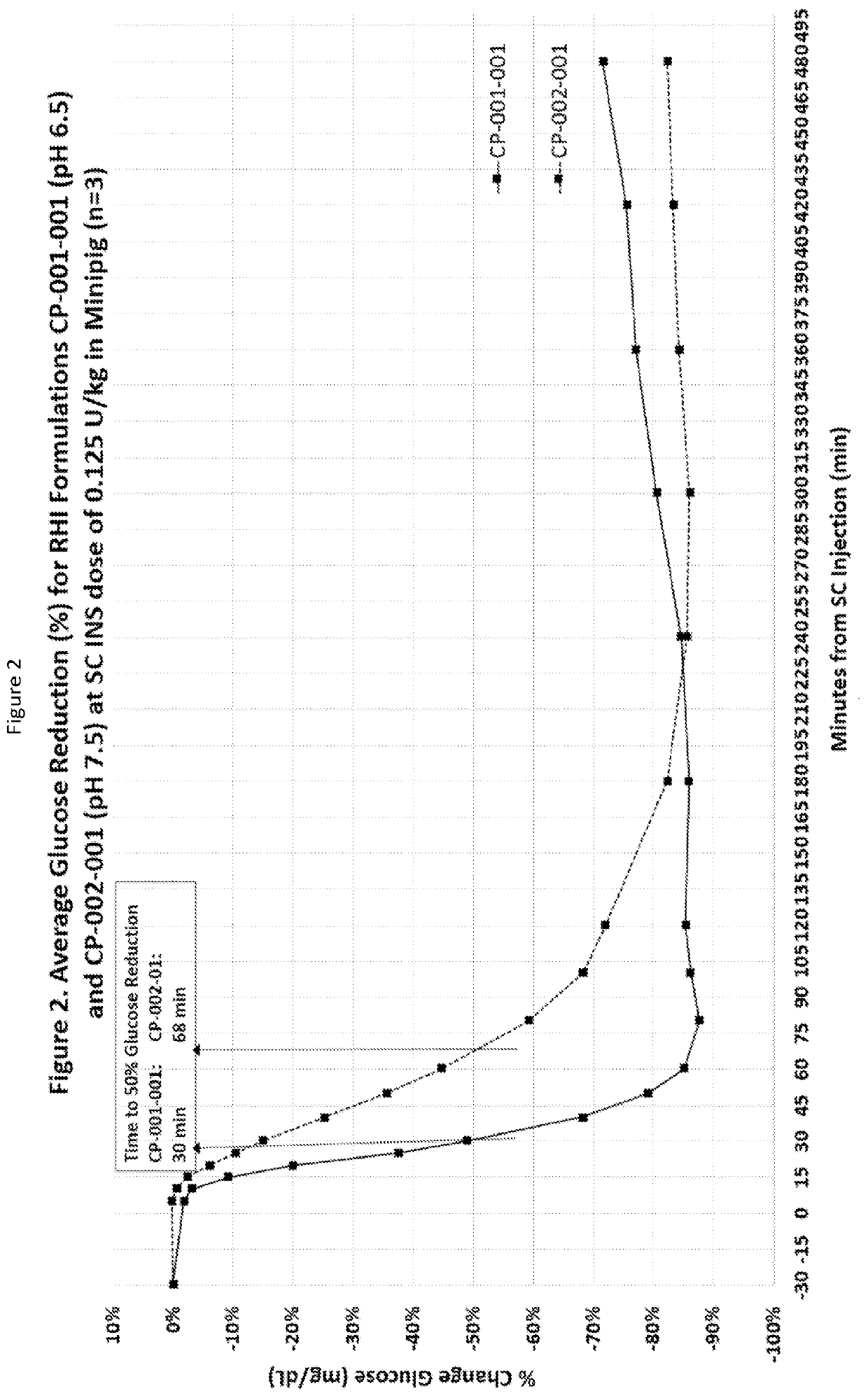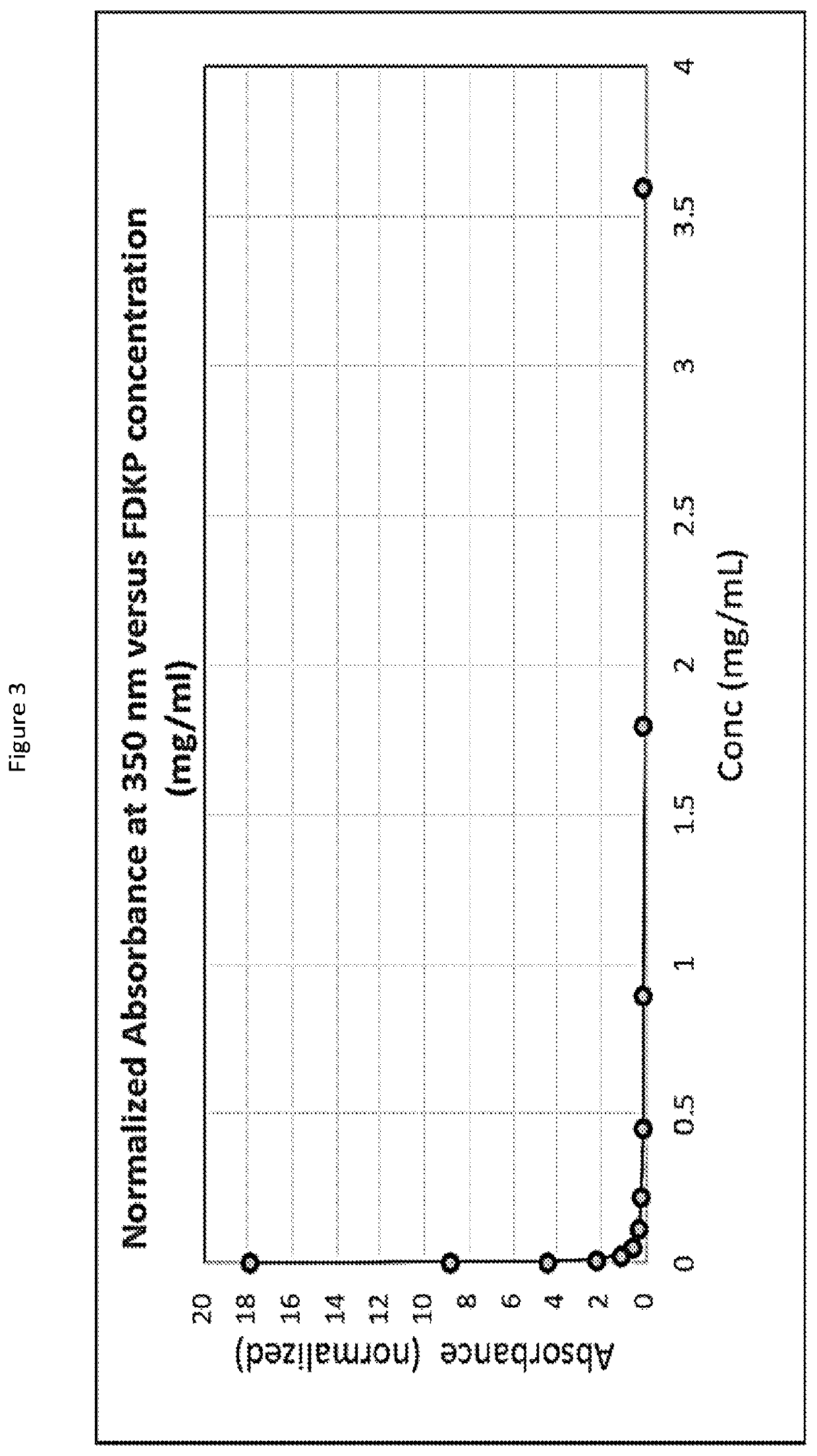Subcutaneously injectable insulin and glucagon formulations and methods of administration
- Summary
- Abstract
- Description
- Claims
- Application Information
AI Technical Summary
Benefits of technology
Problems solved by technology
Method used
Image
Examples
example 1
[0085]Regular recombinant human insulin was put into a water solution with a diketopiperazine (DKP), specifically 2,5-diketo-3,6-di(4-fumarylaminobutyl)piperazine (FDKP) at a pH of 7.4. The solution pH was then lowered to a pH of about 5 by the addition of aqueous HCL. This resulted in the formation of particles, which when dried had a mean diameter of 2 microns. The supernatant in which the particles were suspended contained the zinc from the hexameric insulin. The particles were centrifuged and washed with water at a pH of about 5 to facilitate removal of the zinc. After washing, the particles were suspended in a reverse osmosis (RO) water solution that was adjusted to a pH between 6.4 and 6.8. The resulting solution was clear by visual inspection. Dynamic Laser Light Scattering (DLS) experiments at this pH range showed the clear solution contained a complex significantly greater in size than hexameric insulin, indicating an association of the insulin molecules with the DKP. In ad...
example 2
[0086]Glucagon was put into a water solution with FDKP at a pH of 7.4. The solution pH was then lowered to a pH of about 5 by the addition of aqueous HCL. This resulted in the formation of particles, which when dried had a mean diameter of 2 microns. (or about 8 microns for the Succinic acid DKP). The particles were centrifuged and washed with water at a pH of about 5 to assist in purification. After washing, the particles were suspended in a reverse osmosis (RO) water solution that was adjusted to a pH between 6.4 and 6.8. The resulting solution was clear by visual inspection. Dynamic Laser Light Scattering (DLS) experiments at this pH range showed the clear solution contained a complex significantly greater in size than glucagon itself, indicating an association of the glucagon molecules with the DKP. The resulting solution was stable and did not exhibit gelling under visual examination. The formulation was stable, e.g., lost less than 5% of activity after two weeks storage as a l...
example 3
[0087]Recombinant human insulin (RHI) was prepared in aqueous solutions containing Na2-FDKP as shown in Table 1.
TABLE 1RHINa2FDKPm-cresolBufferFormulation(mg / ml)(mg / ml)(mg / ml)(10 mM)pHA4.16363.0Phosphate7.0B4.43363.0Phosphate7.4C4.1363.0L-Arginine7.2D4.0363.0Tris7.2E4.2363.0Water7.0
[0088]For the formulations in Table 1, 20 ml of 10 mM buffer was made for the 5 different formulations. To each buffer, m-cresol was added at a concentration of 3 mg / ml. 75 mg of FDKP was weighed into 5 different 5 ml Eppendorf tubes, one for each buffer. To each tube, 1.5 ml of buffer was added and inverted to mix. A standard solution of insulin was made by weighing 100 mg of insulin into a 5 ml Eppendorf and adding 2 ml of 0.1N HCL. To each 5 ml centrifuge tube containing FDKP, buffer, and m-cresol, 160 μl of insulin solution was added. The pH was adjusted to values in the above table and then volume was brought up to 2 ml. The solutions were filtered through an 0.2 um syringe tip filter and split into ...
PUM
 Login to View More
Login to View More Abstract
Description
Claims
Application Information
 Login to View More
Login to View More - R&D
- Intellectual Property
- Life Sciences
- Materials
- Tech Scout
- Unparalleled Data Quality
- Higher Quality Content
- 60% Fewer Hallucinations
Browse by: Latest US Patents, China's latest patents, Technical Efficacy Thesaurus, Application Domain, Technology Topic, Popular Technical Reports.
© 2025 PatSnap. All rights reserved.Legal|Privacy policy|Modern Slavery Act Transparency Statement|Sitemap|About US| Contact US: help@patsnap.com



